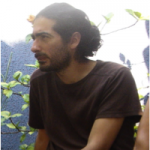Link to Pubmed [PMID] – 28649312
Link to DOI – 10.1186/s13229-017-0146-8
Mol Autism 2017 ; 8(): 24
The tremendous clinical and aetiological diversity among individuals with autism spectrum disorder (ASD) has been a major obstacle to the development of new treatments, as many may only be effective in particular subgroups. Precision medicine approaches aim to overcome this challenge by combining pathophysiologically based treatments with stratification biomarkers that predict which treatment may be most beneficial for particular individuals. However, so far, we have no single validated stratification biomarker for ASD. This may be due to the fact that most research studies primarily have focused on the identification of mean case-control differences, rather than within-group variability, and included small samples that were underpowered for stratification approaches. The EU-AIMS Longitudinal European Autism Project (LEAP) is to date the largest multi-centre, multi-disciplinary observational study worldwide that aims to identify and validate stratification biomarkers for ASD.LEAP includes 437 children and adults with ASD and 300 individuals with typical development or mild intellectual disability. Using an accelerated longitudinal design, each participant is comprehensively characterised in terms of clinical symptoms, comorbidities, functional outcomes, neurocognitive profile, brain structure and function, biochemical markers and genomics. In addition, 51 twin-pairs (of which 36 had one sibling with ASD) are included to identify genetic and environmental factors in phenotypic variability.Here, we describe the demographic characteristics of the cohort, planned analytic stratification approaches, criteria and steps to validate candidate stratification markers, pre-registration procedures to increase transparency, standardisation and data robustness across all analyses, and share some ‘lessons learnt’. A clinical characterisation of the cohort is given in the companion paper (Charman et al., accepted).We expect that LEAP will enable us to confirm, reject and refine current hypotheses of neurocognitive/neurobiological abnormalities, identify biologically and clinically meaningful ASD subgroups, and help us map phenotypic heterogeneity to different aetiologies.


